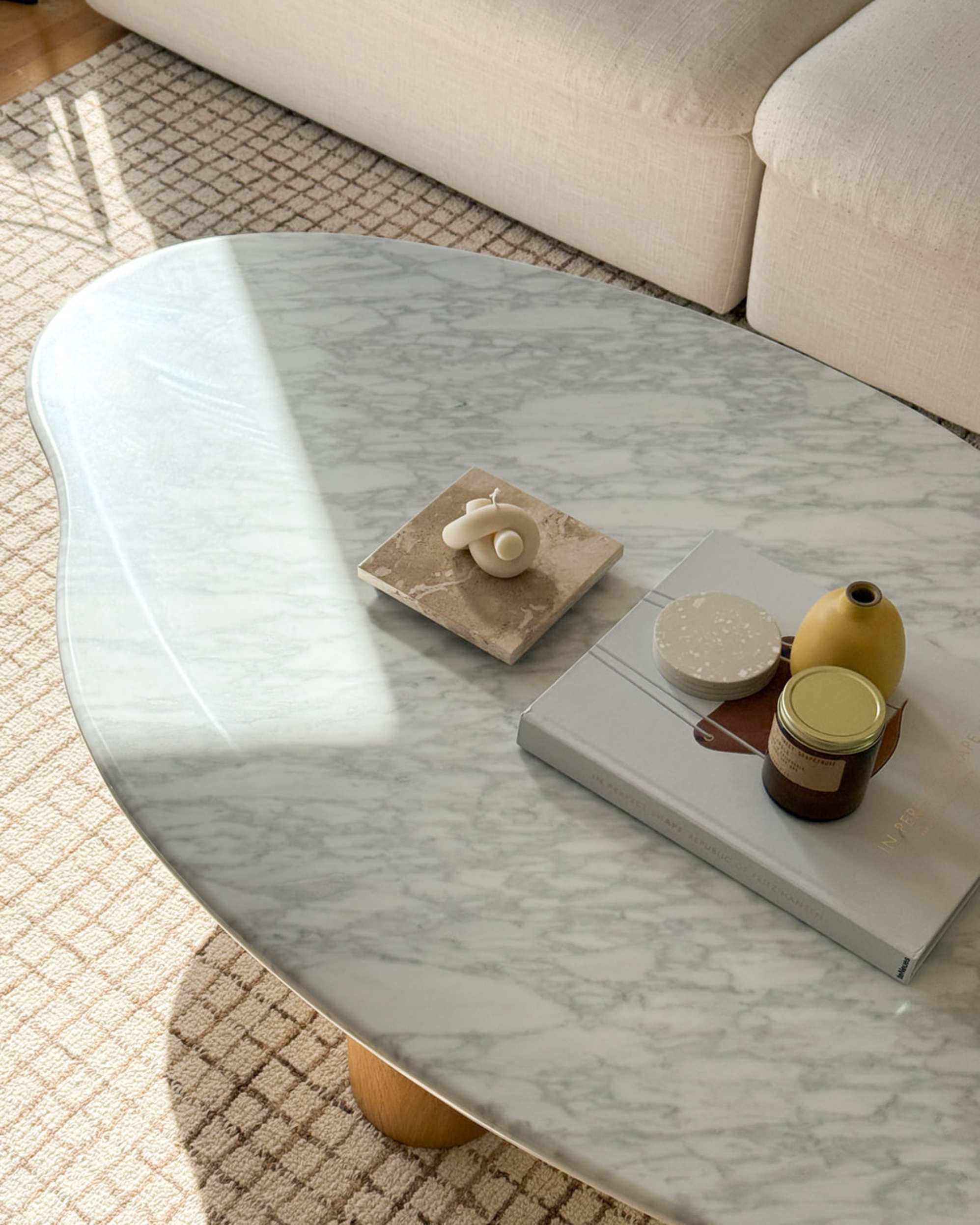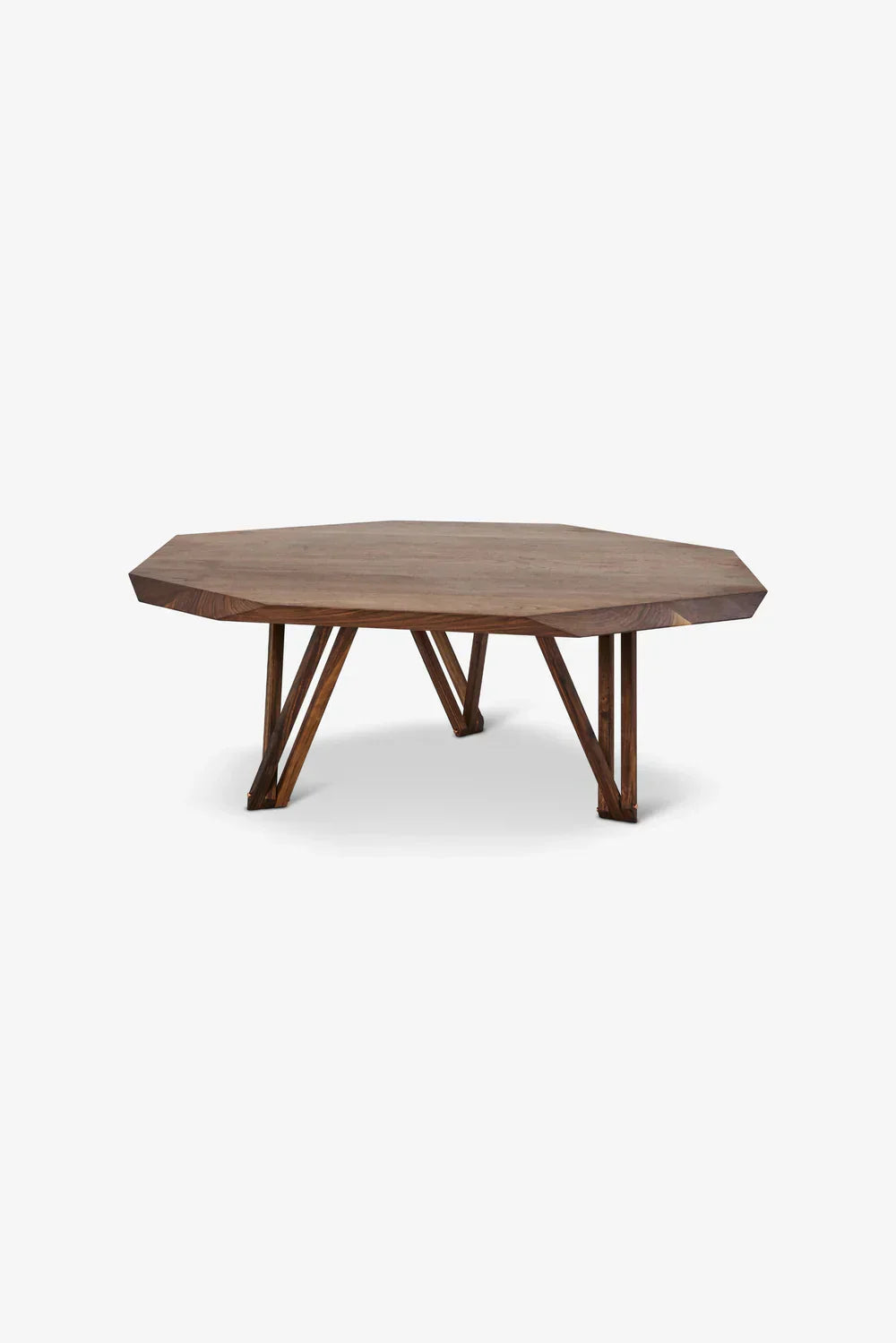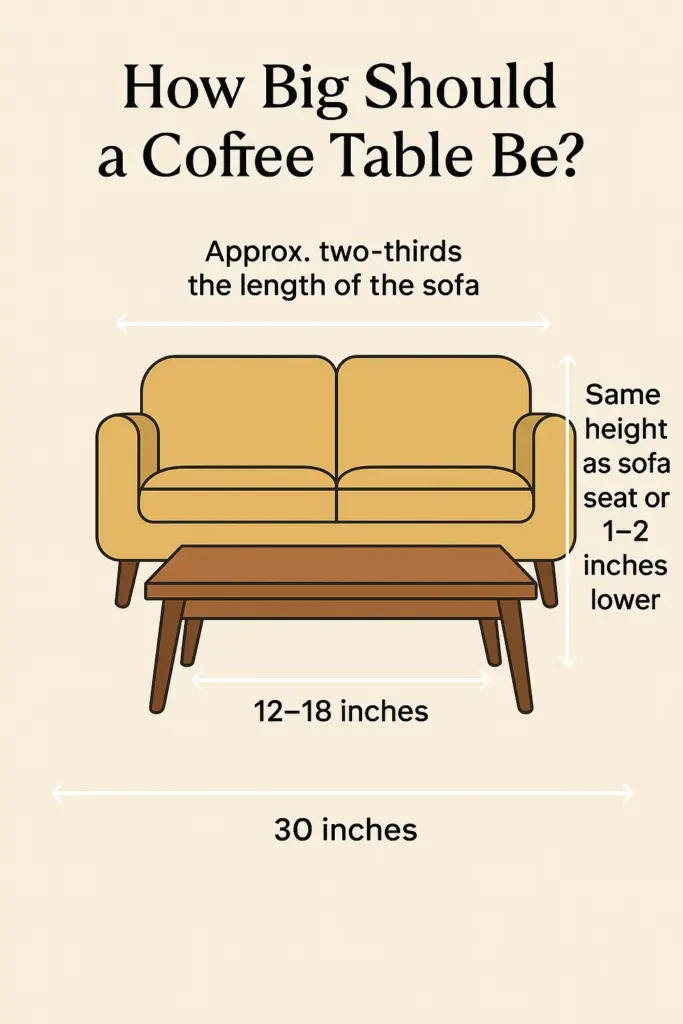Choosing the right size coffee table can change the whole feel of your living room. You might wonder, “How big of a coffee table should I get?” Too small, and it won’t hold your drinks or snacks.
Too big, and it could crowd your space, making it hard to move around. Finding the perfect balance is key to creating a comfortable and stylish room you’ll love. Keep reading, and you’ll discover simple tips to pick a coffee table size that fits your space and your lifestyle perfectly.
Choosing The Right Size
Choosing the right size for your coffee table is crucial to making your living space both functional and inviting. A table that fits perfectly enhances comfort and flow, while one that’s too big or small can disrupt the room’s balance. Before you buy, think carefully about your space and how you use it.
Measuring Your Space
Start by measuring the area where you plan to place the coffee table. Use a tape measure to note the length and width between your seating arrangements.
Leave enough room for people to move around easily—ideally, there should be 18 inches of clearance on all sides of the table. This prevents the room from feeling cramped and keeps traffic flowing smoothly.
Considering Room Layout
Think about your room’s shape and how furniture is arranged. Is your seating clustered tightly or spread out? A long sectional may need a narrow, rectangular table, while a square setup can handle a larger, square table.
Ask yourself: Does the table complement the flow of the room or interrupt it? Choosing the right shape and size will help your living space feel balanced and natural.
Balancing Scale And Proportion
Your coffee table should match the scale of your sofa and chairs. If your furniture is large and bulky, a tiny table will look out of place and feel less useful. Conversely, a massive table can overwhelm delicate seating.
Think about height too—your table should be roughly the same height as your sofa cushions or slightly lower. This makes reaching for a drink or book comfortable and keeps the area visually harmonious.

Credit: www.castlery.com
Standard Coffee Table Dimensions
Choosing the right coffee table size helps balance your living room space. Standard coffee table dimensions offer a good starting point. These sizes fit most sofas and seating arrangements. Knowing these can simplify your decision and improve room flow.
Common Lengths And Widths
Most coffee tables range between 36 to 48 inches in length. Widths typically fall between 18 to 24 inches. These sizes provide enough surface area without crowding the room. Narrower tables suit smaller spaces better. Wider tables work well in larger living rooms.
Typical Heights
The standard coffee table height is about 16 to 18 inches. This height aligns well with most sofa seat heights. It allows easy reach for drinks and snacks. Taller tables can disrupt comfort and flow. Shorter tables may feel awkward next to chairs.
Shape Variations And Sizes
Square, rectangular, round, and oval shapes are common. Rectangular tables offer more surface space. Square tables fit nicely in smaller rooms. Round and oval tables create smooth traffic flow. Each shape comes in various sizes to match room needs.
Matching Coffee Table To Sofa
Choosing the right coffee table for your living room isn’t just about style; it’s about finding the perfect match for your sofa. A well-matched coffee table complements your sofa, creating a cohesive look that enhances both comfort and functionality. But how do you ensure your coffee table is the right size for your sofa?
Height Alignment
The height of your coffee table is crucial for comfort and aesthetics. Ideally, your coffee table should be the same height as the cushions on your sofa or slightly lower. This ensures easy access to items on the table without straining your arm or back.
Imagine reaching for your cup of coffee and finding it conveniently at hand, not too high or low. This small detail can make a big difference in the overall comfort of your living space.
Distance From Sofa
Maintaining the right distance between the coffee table and your sofa is essential for ease of movement. Aim for 12 to 18 inches of space between the edge of your sofa and the coffee table. This spacing allows for ample legroom and prevents the feeling of a cramped living area.
Think about the times you’ve had to squeeze past a table while holding a plate of snacks—frustrating, right? Avoid these awkward moments by considering the space you’ll need.
Width Relative To Seating
The width of your coffee table should be proportionate to your seating area. As a rule of thumb, your coffee table should be about two-thirds the length of your sofa. This proportion helps maintain visual balance and ensures the table doesn’t overwhelm your seating arrangement.
Picture a table that feels just right—not so small that it looks lost, nor so large that it dominates the room. Finding this balance is key to a harmonious living space.
Choosing the right coffee table size involves more than just aesthetics. It’s about creating a space that’s comfortable, practical, and inviting. Have you found the perfect match for your sofa yet?
Functionality And Use
Choosing the right coffee table size depends heavily on how you plan to use it. Functionality and use are key factors that guide this decision. The table should fit your lifestyle and daily needs. Consider your habits and space to find a balance between size and usefulness.
Storage Needs
Think about what you want to store in your coffee table. Some tables come with shelves or drawers. These options help keep your living area tidy. If you have many items like magazines, remote controls, or board games, extra storage is useful. A larger table with built-in storage can hold more items without cluttering the room.
Multi-purpose Tables
Coffee tables can do more than just hold drinks. Some models serve as desks or dining spots. Others have lift tops for extra convenience. A multi-purpose table saves space and adds value. Choose a size that fits all these functions without crowding the room. It should be easy to move and use for different activities.
Traffic Flow Considerations
Check how people move around the coffee table. There should be enough space to walk comfortably. Avoid a table that blocks pathways or makes the room feel cramped. Leave at least 18 inches of space around the table for easy movement. Proper traffic flow helps maintain a welcoming and open space.
Style And Design Impact
Style and design play a huge role in deciding how big your coffee table should be. It’s not just about fitting the space but making a statement that matches your personal taste and the vibe of your room. The right size can enhance your living area’s flow and make your furniture feel balanced.
Visual Weight And Material
Think about the visual weight of your coffee table. A bulky wooden table can dominate a small room, making it feel cramped. On the other hand, a glass or acrylic table can look lighter and more open, even if it’s larger in size.
Materials also affect how a table fits your space. Metal frames with slim legs offer a sleek look, while chunky wood pieces bring warmth but demand more room. Have you noticed how a heavy table can anchor a room, while a lighter one lets the space breathe?
Complementing Room Decor
Your coffee table should blend smoothly with your existing decor. Matching the style and color of your furniture helps the room feel cohesive. If your room has modern furniture, a minimalist table with clean lines works best.
In a cozy, rustic setting, a reclaimed wood coffee table adds character without overwhelming the room. What’s your room’s personality telling you? Let that guide your choice.
Choosing Shapes For Style
Shape impacts both style and how your coffee table fits in the room. Rectangular tables are classic and work well in larger living rooms. They provide plenty of surface area but can crowd smaller spaces.
Round or oval tables soften the look and improve flow, especially in tight areas. Square tables suit symmetrical layouts and add a modern touch. Could changing the shape solve your space or style dilemmas?
Special Room Considerations
Choosing the right coffee table size depends heavily on the room’s unique features. Each space has its own challenges and needs. The shape, size, and flow of the room affect the coffee table choice. Understanding these special room considerations helps pick the best fit. The table should complement the room without overcrowding or looking too small.
Small Living Rooms
Small living rooms need compact coffee tables. Choose tables with slim profiles to save space. Round or oval shapes work well to avoid sharp corners. Consider tables with storage to keep clutter away. Keep at least 18 inches of space around the table for easy movement.
Open Floor Plans
Open floor plans require coffee tables that blend with multiple areas. A medium-sized table often works best. It should connect the seating area without blocking pathways. Lightweight or transparent tables help maintain an open feel. Use rugs to define the space around the table clearly.
Irregular Spaces
Irregular rooms call for creative table solutions. Custom or modular tables fit odd shapes better. Look for pieces that can be moved or adjusted easily. Triangular or asymmetrical tables can fill unusual corners well. Measure carefully and visualize the flow before buying.
Tips For Measuring And Placement
Choosing the right size coffee table depends on careful measuring and smart placement. This ensures the table fits well and complements your living space. Accurate measurements help avoid awkward gaps or cramped areas around the table.
Planning where the table will sit keeps the room balanced and easy to move around. Consider the space between your sofa and the table for comfort and accessibility. These tips simplify the process and help you pick the perfect coffee table size.
Using Tape Measures Effectively
Use a tape measure to check the length and width of your available space. Measure from the front edge of your sofa to the point where you want the table to end. Keep at least 18 inches between the sofa and the table for easy movement.
Check the height of your sofa seat to match the coffee table height. The table should be about the same height or slightly lower than the sofa seat. Record all measurements for reference when shopping.
Mock-up With Paper Or Tape
Create a paper outline of the coffee table dimensions on the floor. Use painter’s tape to mark the shape and size directly in your room. This visual helps you see how much space the table will take.
Move around the taped area to check flow and comfort. Adjust the outline size if it feels too big or too small. This step avoids guesswork and shows real room impact.
Adjusting For Accessories
Remember to leave space for items like trays, books, or decorations on the table. Account for extra room if you plan to place lamps or plants nearby. The table should not block pathways or crowd seating areas.
Keep walking space clear by allowing at least 12 to 18 inches between the table and other furniture. This balance keeps your room functional and inviting.

Credit: tribesigns.com

Credit: noyerdenmark.com
Frequently Asked Questions
How Do I Measure The Right Coffee Table Size?
Measure your seating area first. A coffee table should be about two-thirds the length of your sofa. Keep 18 inches between the table and seating for comfort.
What Is The Ideal Height For A Coffee Table?
The ideal coffee table height matches your sofa seat height or is slightly lower. Typically, 16 to 18 inches works well for comfortable reach.
How Much Space Should Be Around A Coffee Table?
Leave at least 18 inches of space around your coffee table. This ensures easy movement and access without crowding the area.
Should Coffee Table Shape Match The Room Layout?
Yes, consider your room shape. Rectangular tables suit long spaces, while round tables fit smaller or square rooms better.
Conclusion
Choosing the right coffee table size makes your space feel balanced. Think about your room’s size and furniture layout first. A table too big can crowd the room. Too small, and it may look lost or be less useful. Keep enough space to walk around comfortably.
Measure carefully before buying to avoid mistakes. The perfect table fits your style and needs. This simple step helps create a cozy and functional living area.





